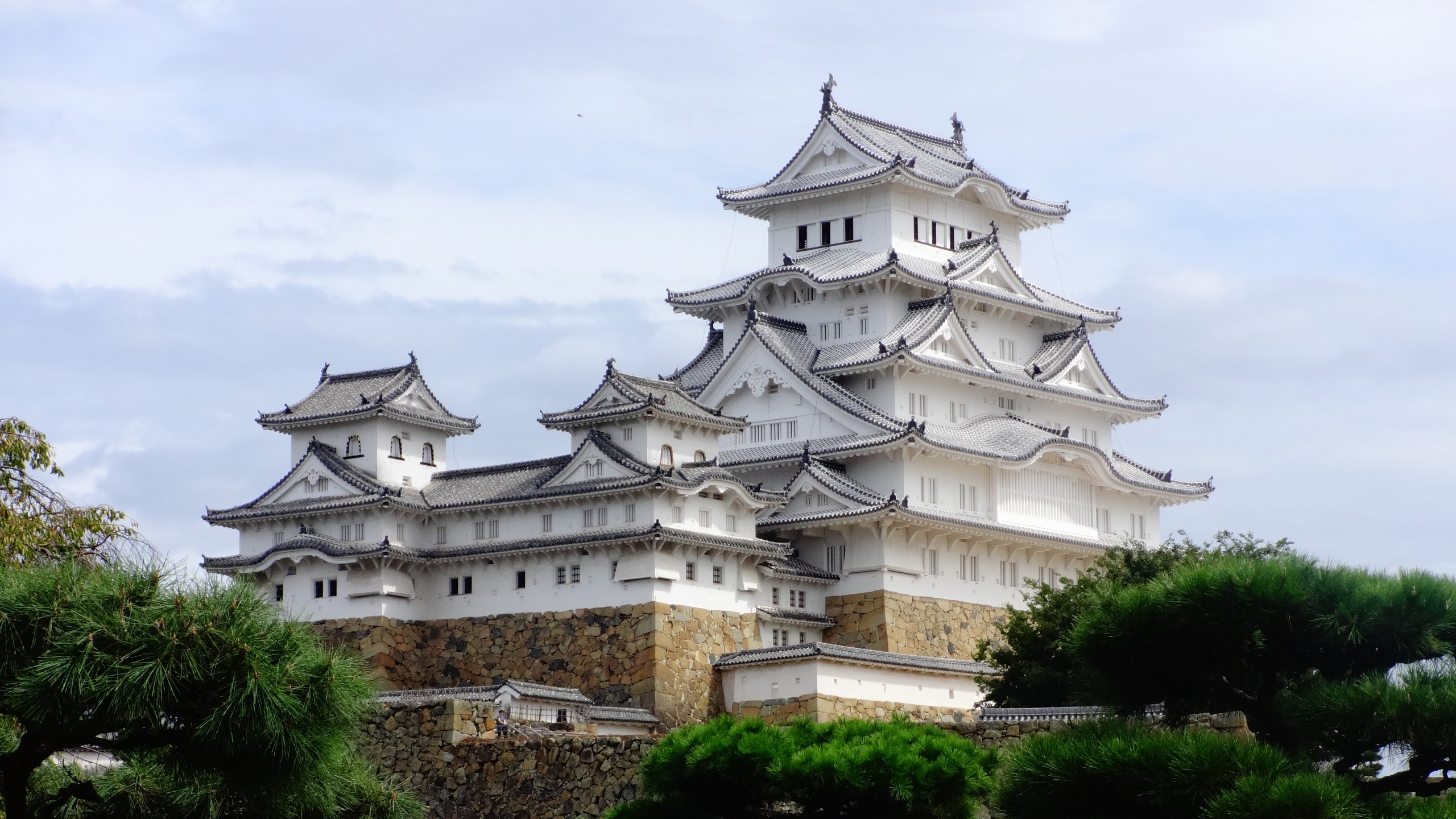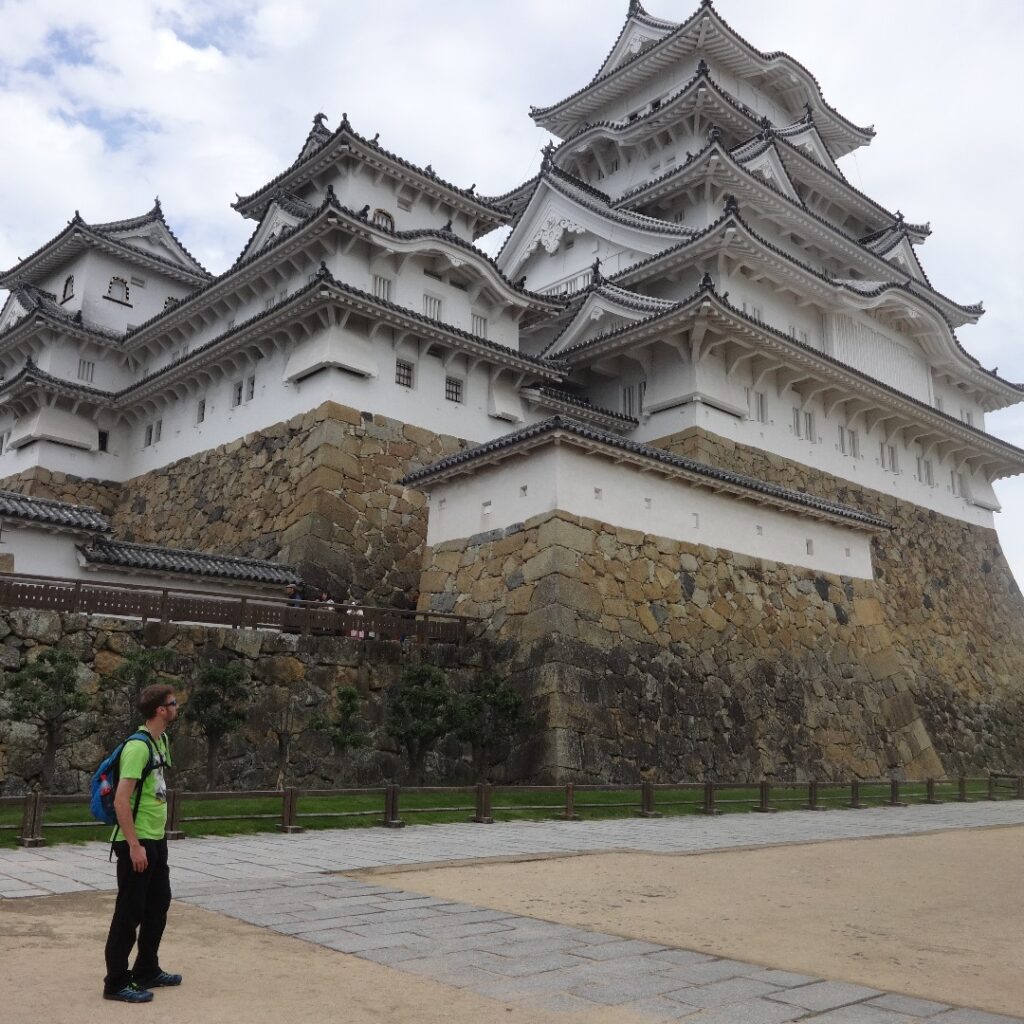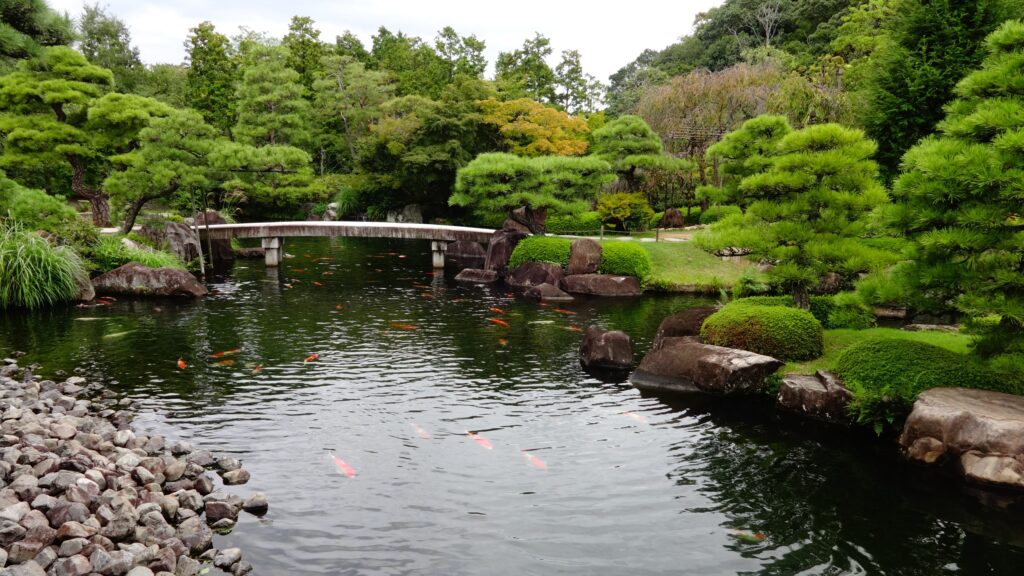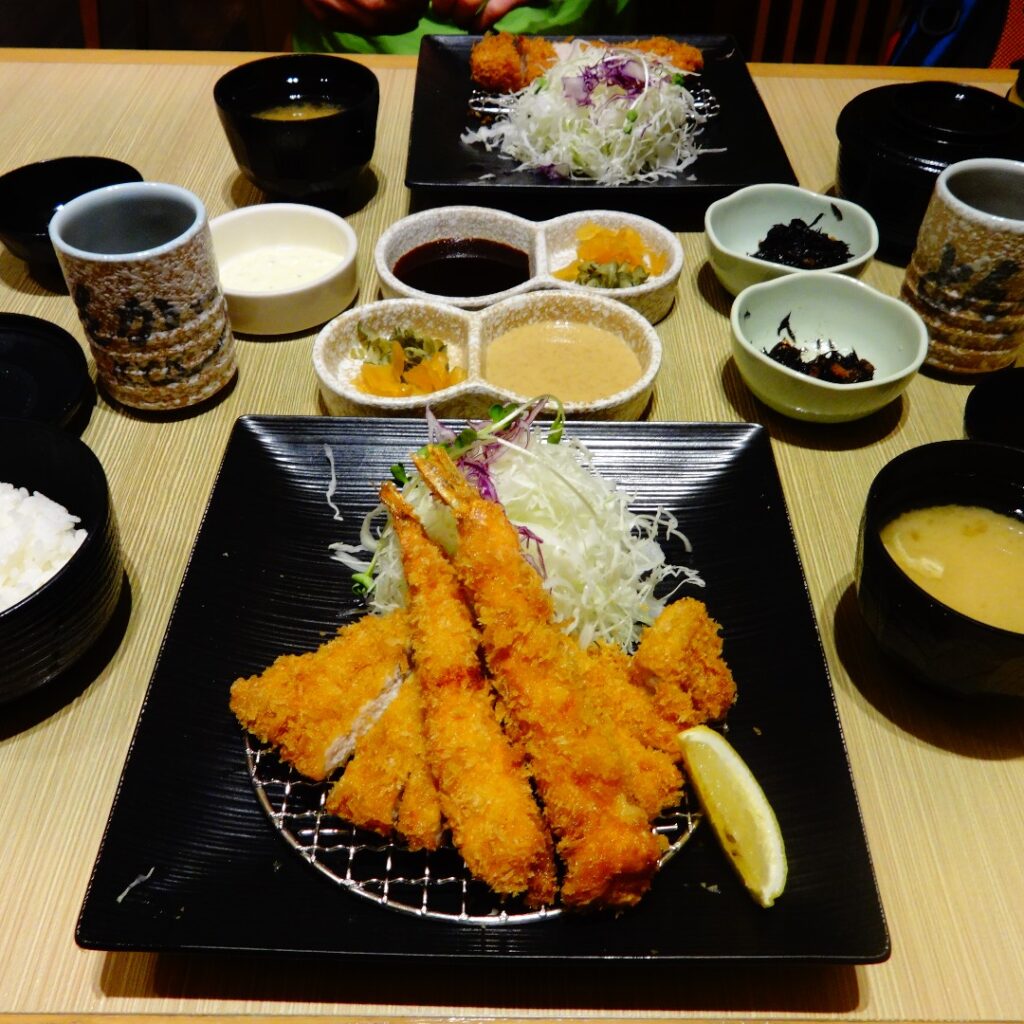
DAY 9
(Reading time: 4 minutes)
There’s nothing like spending five nights in Kyoto, but not even a single day actually sightseeing in the city itself. Today was no exception. Once again, we took the train out of Kyoto, this time for visiting Japan’s largest castle, Himeji. The shinkansen Hikari took us to the city of the same name in about an hour.
The castle is nicknamed “White Heron Castle” because of its bright white color, but also due to its alleged resemblance to this bird. It’s the most visited castle in Japan and a popular filming location for movies and series. It’s included in the list of “Three Famous Castles,” “Twelve Original Castles,” “Toyotomi Hideyoshi’s Residences,” and whatnot. In short, it’s a must-see/must-visit/must-do-before-you-die, and if you’ve been to Japan but haven’t seen Himeji, then it doesn’t count. 😀 We’ve successfully checked it off our list.

Himeji embodies typical Japanese castle architecture. They used to build the “genuine” castles from wood on a stone base, surrounded by thick walls, sometimes even with castle moats, along which guard towers stood, leading to the castle were several gates, and inside the residential buildings housed lords, commoners and soldiers. The cherry on top was the main castle tower (keep), the most prominent and best-defended part of the whole structure.
The extensive complex of 83 buildings at Himeji stands on solid stone foundations, and a labyrinth of paths leads to the main tower to confuse and slow down potential attackers.
There’s not much to see inside; bare walls, bare floors, the higher you go, the narrower the spaces become, and here and there you can see a display case with information about the construction or modernization of the castle. Some castles and chateauxes are beautiful outside and rather empty inside…well, let me tell you, this ain’t Wonka factory either.

Take notice of those strange black creatures on the tops of the roofs – they look like the roofs have horns.

Meet Shachihoko. A mythical sea creature with the body of a fish and the head of a tiger, which is supposed to protect the building from destruction by fire. People believed that in case of a fire outbreak, Shachihoko would spew a stream of water from its body or summon rain clouds. It’s not the first animal adorning roofs as a protector against fire; anyway, this fish-tiger makes more sense than dragons.

After visiting Himeji, we took a short walk to the nearby Kokoen Gardens, from where there’s a beautiful view of the entire castle structure (see the introductory photo).

Today was a bit calmer, more restful; there’s no need for hardcore sightseeing every day, sometimes you need to slow down to prevent mental overload. But satisfying the stomach, that’s a different story. So, we ended the trip in the company of tempura (pieces of fish/shrimp/vegetables fried in batter) and tonkatsu (Japanese-style schnitzel), ordering only those two black square plates. I’m truly fascinated by the Japanese automatism of adding rice, miso soup, sauces, seaweed, tea, water to everything… oh, and we got all of that at once.

-endy-
DONKEY’S SPECIAL:
-mj-